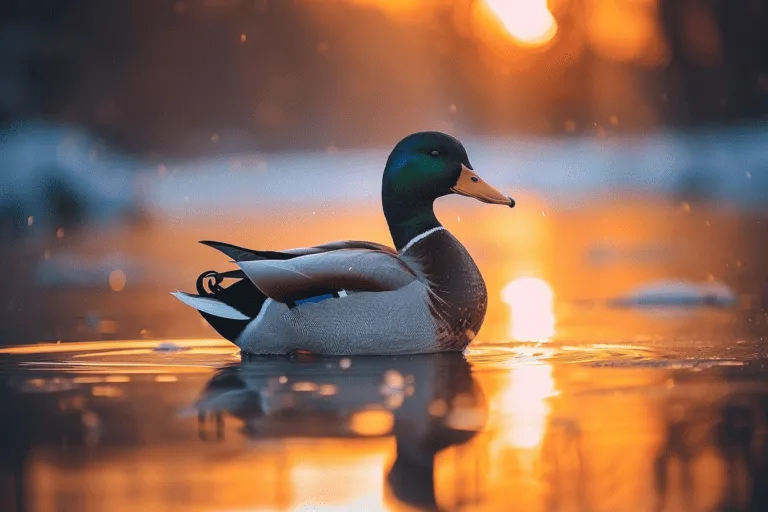10 Owl Facts (Insights into Their Mysterious World)
Owls have always captivated us with their silent flight, haunting calls, and eyes that pierce through the darkness. These nocturnal creatures are not just symbols of wisdom in folklore; they hold a myriad of secrets waiting to be discovered.
From their incredible hunting skills to their unique adaptations for survival, owls stand out in the avian world as both mysterious and magnificent.
If you’re eager to dive into the world of these intriguing birds and uncover what makes them so special, our listicle on owl facts is your go-to resource. Scroll down to explore our top picks that shine a light on the enigmatic life of owls.
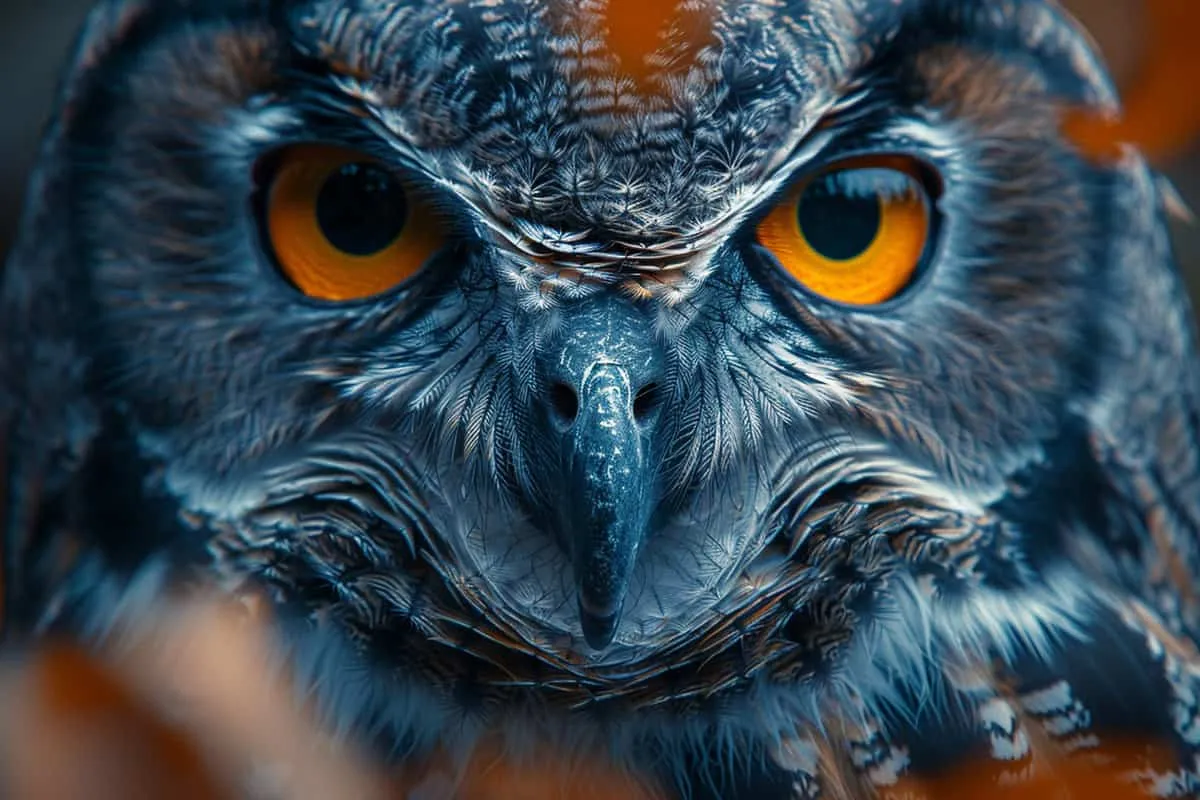
1. Owls can rotate their heads up to 270 degrees.
One of the most fascinating owl facts is their ability to turn their heads up to 270 degrees. This unique skill allows owls to look in many directions without moving their bodies.
Imagine being able to see what’s happening behind you without turning around! That’s exactly what owls can do.
This head-turning feature is especially useful for spotting prey or predators easily. Owls are hunters, so seeing in all directions helps them catch food and stay safe from danger.
Their necks have a special structure that prevents blood vessel pinching during this extreme rotation, ensuring they don’t hurt themselves while looking around.
Many owls use this ability at night when hunting. Their necks are not only flexible but also strong, supporting their zygodactyl feet (two toes facing forward and two backward) and large head as they pivot it left or right, scanning for dinner holes or threats.
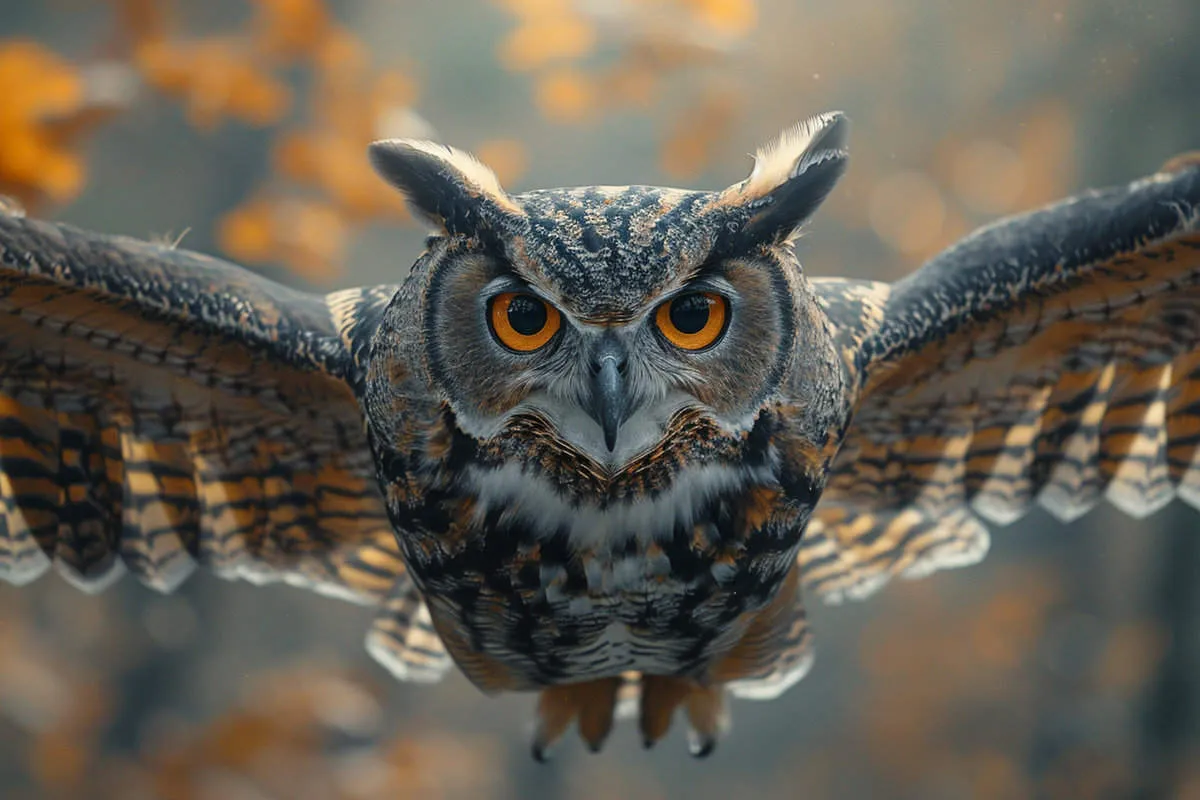
2. Owls have three eyelids: for blinking, sleeping, and keeping the eye clean and healthy.
Owls are fascinating creatures with unique features. One of these features is their three eyelids. Each one serves a different purpose:
- The first eyelid is for blinking. It helps to keep their eyes moist and free from dust.
- The second eyelid closes when an owl sleeps. This acts like a protective curtain, ensuring their eyes are safe while resting.
- Lastly, the third eyelid sweeps across the eye sideways. It’s transparent and cleans the surface of the eyeball.
These multiple layers of protection are crucial for owls. Their hunting lifestyle demands clear vision at all times.
Whether swooping down on prey during night or day, they need to see every detail sharply.
Moreover, these specialized eyelids protect and moisturize the eye effectively against harsh environments.
Imagine being high up in a tree or soaring through windy skies; your eyes would get dry pretty fast without this kind of protection!
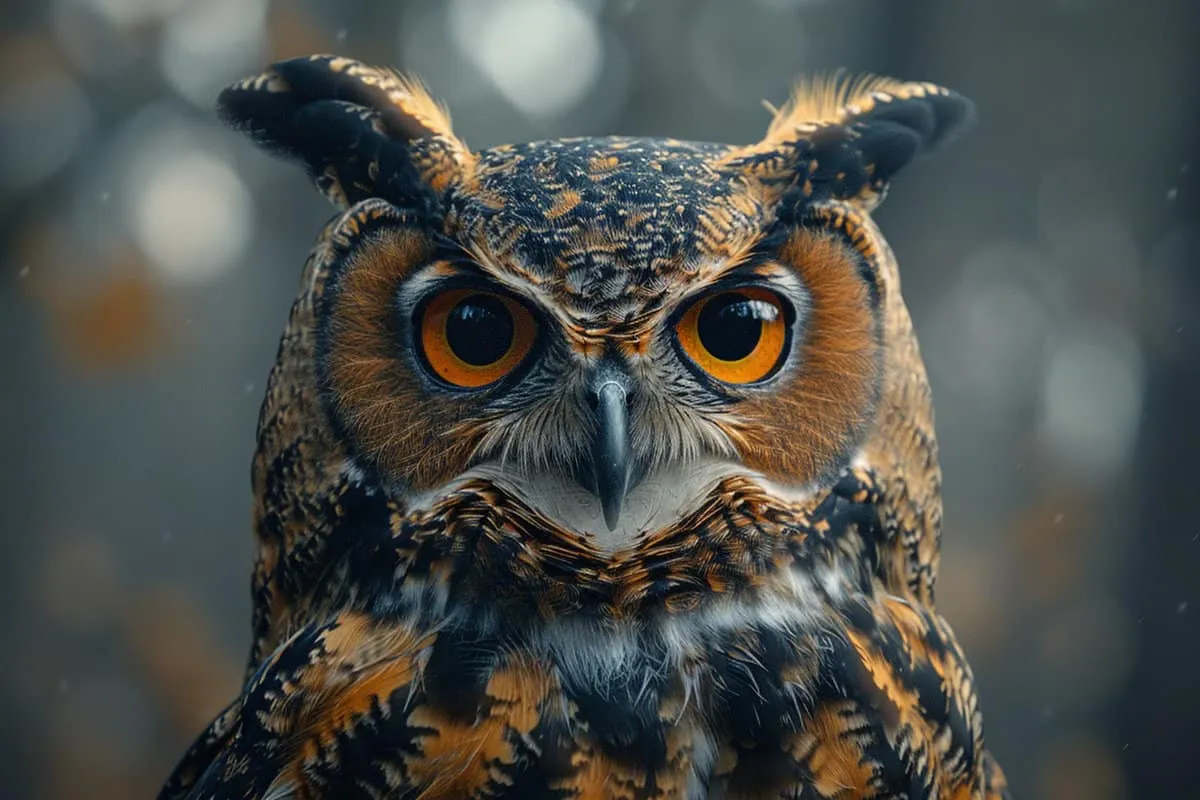
3. Not all owl species are nocturnal; some are active during the day or dusk.
When we think of owls, we often picture them as mysterious creatures of the night. However, not all owls fit this mold. Some species break the stereotype by being active during daylight or twilight hours.
Diurnal owls prefer to hunt when the sun is up. This daytime activity allows them to target different prey than their nocturnal counterparts, such as insects and small mammals that are also active during these hours.
An example is the Northern Saw-whet Owl, known for its adaptability in hunting techniques based on the time of day.
Crepuscular owls choose a more balanced schedule by being most active at dawn and dusk. This behavior aligns with times when light and darkness mix, offering unique hunting advantages.
These periods allow them to exploit prey that may be less wary in low light conditions.
The timing of an owl’s activity—whether it’s during the day, night, or twilight—significantly influences its hunting strategies and choice of prey.
- Daytime hunters rely on sharp vision under bright conditions.
- Twilight-active (crepuscular) species benefit from both their night-vision capabilities and reduced competition from strictly diurnal or nocturnal predators.
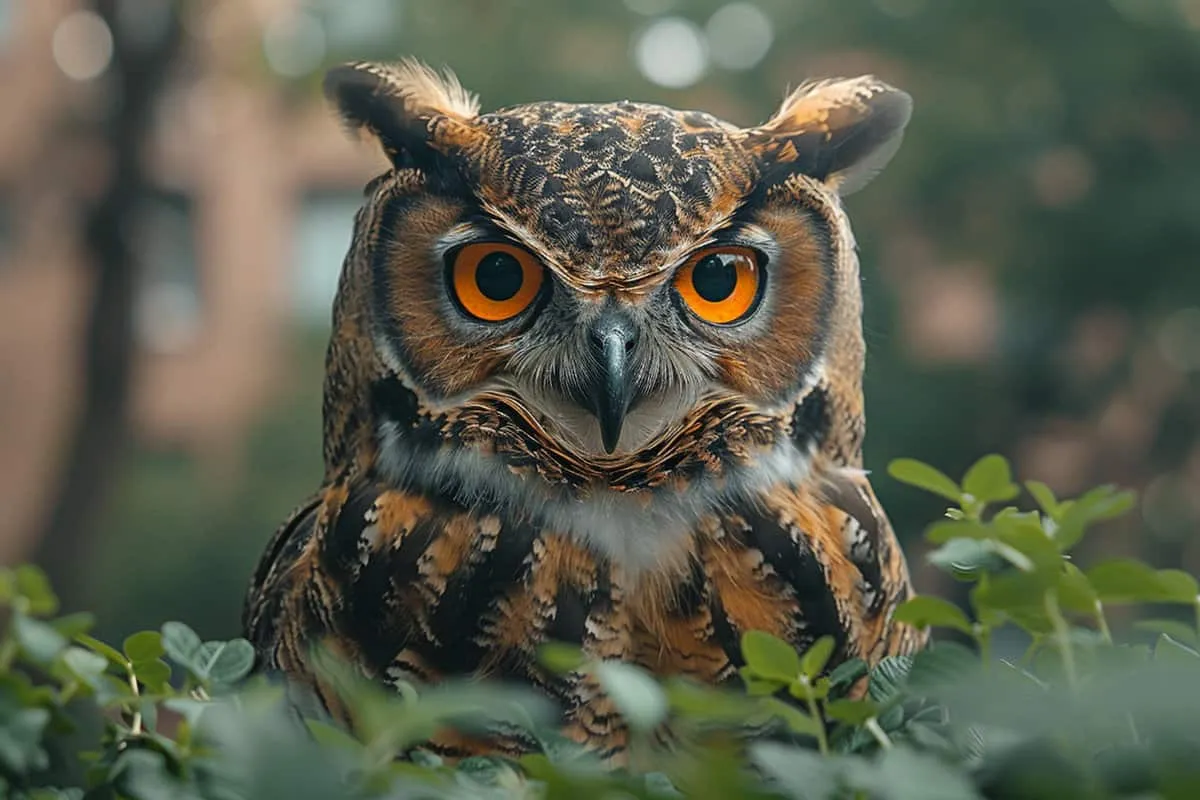
4. Owl’s flight is virtually silent due to specialized feather edges.
Owls have a unique way of flying that hardly makes any noise. This helps them sneak up on their prey without being noticed. Their feathers play a big role in this stealth mode.
The edges of an owl’s feathers are designed to cut through the air quietly. When they flap their wings, these special edges break up the air turbulence into smaller currents.
This means less sound is made as they move through the air.
Imagine trying to surprise someone without making a single sound; that’s what owls do every time they hunt. Their silent flight gives them an edge over their prey, often catching it off guard.
A perfect example of this in action is when an owl hunts for a vole at night. The vole won’t hear anything until it’s too late because the owl’s approach is so quiet thanks to its downy feathers and wing design.
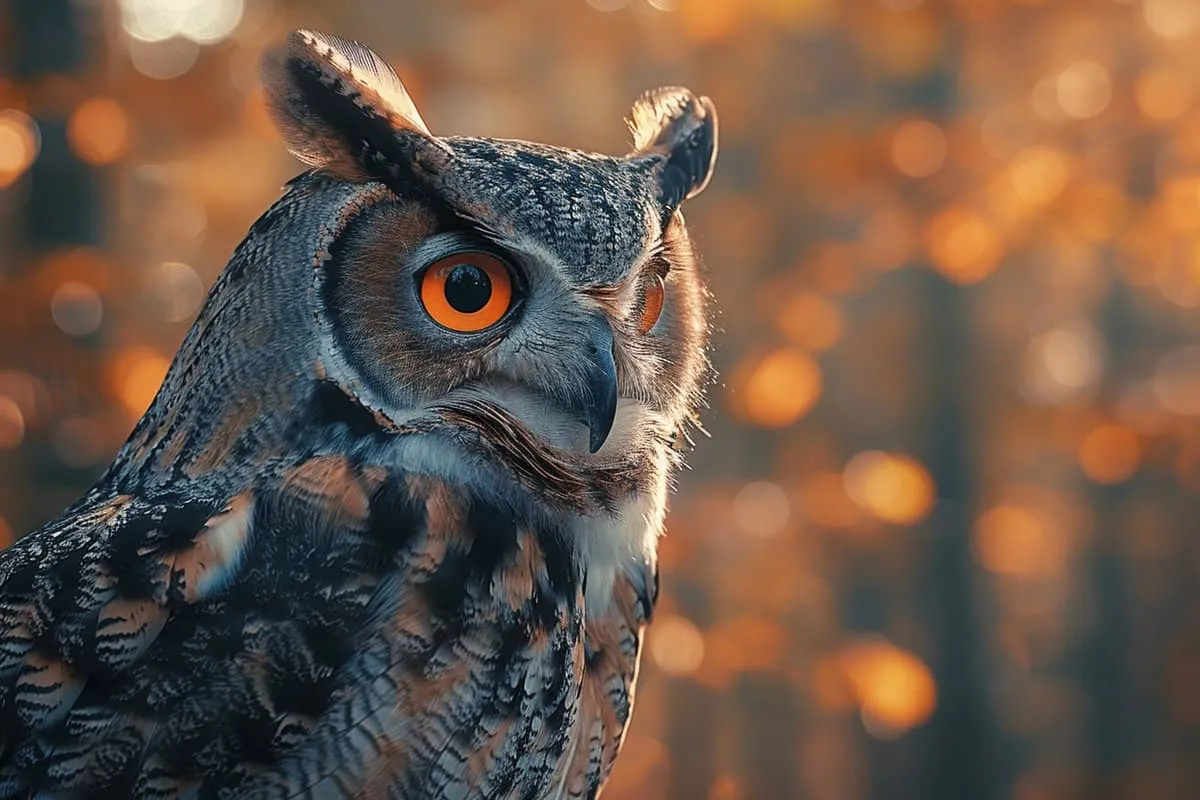
5. Owls have asymmetric ears for precise location of sounds.
Owls are fascinating creatures, especially. One secret behind their success is their unique ear placement. Unlike most animals whose ears are symmetrically placed, owls have asymmetric ears. This means one ear is higher than the other on their head.
This unusual setup allows owls to pinpoint exactly where a sound is coming from. When a mouse rustles leaves or twigs on the forest floor, an owl can detect the noise with incredible precision.
The varied heights of their ears capture these sounds at slightly different times and angles.
Why does this matter? For an owl, hearing isn’t just about recognizing a sound; it’s about creating a three-dimensional map of its surroundings purely based on audio cues.
This enhanced depth perception through sound is crucial for hunting in complete darkness where eyesight might not be as useful.
Imagine throwing a ball without looking and still catching it perfectly because you can hear exactly where it will land—that’s how good an owl’s hearing needs to be!
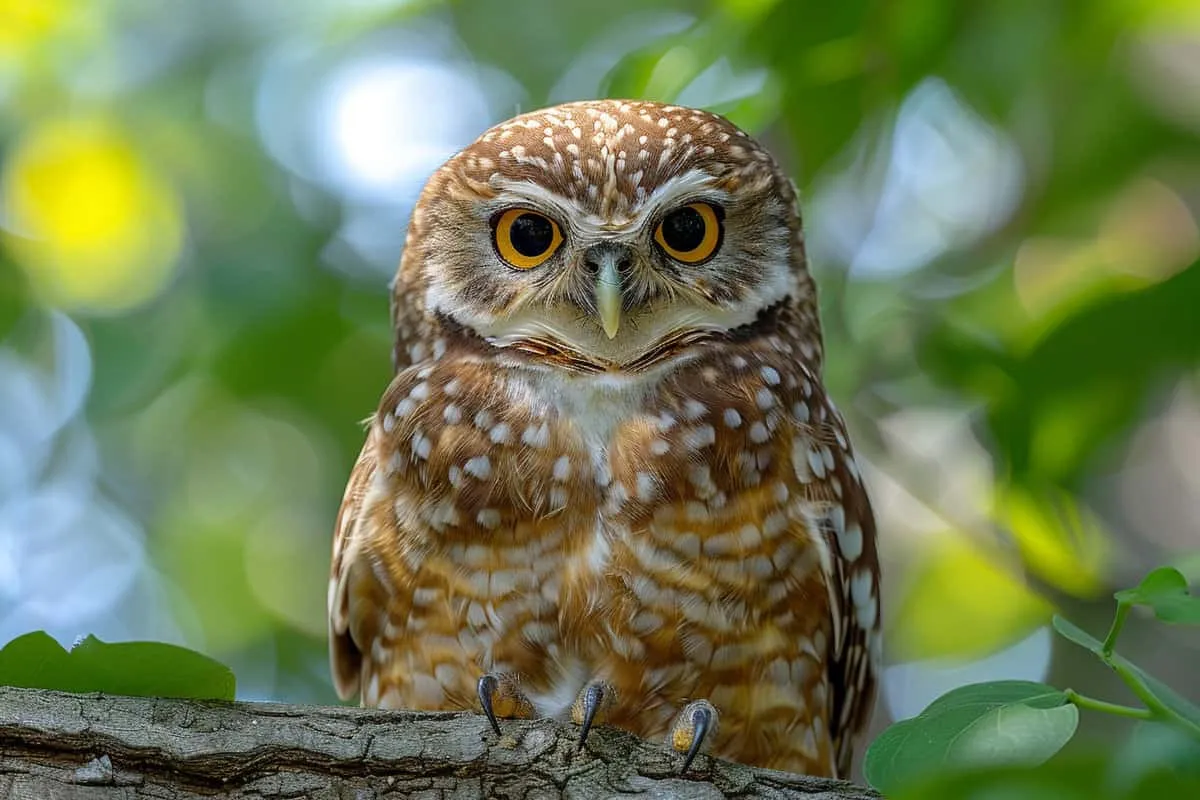
6. The size of an owl’s eyes is related to its hunting habits and time of activity.
Owls with larger eyes are like superheroes of the night. These big eyes help them see better in the dark, making them excellent hunters when it’s pitch black outside.
It’s all about soaking up as much light as possible to spot their next meal.
The size of an owl’s peepers isn’t just for show; it tells us whether they prefer to hunt during the day or at night.
Nocturnal owls, those active at night, often have bigger eyes compared to their daytime (diurnal) cousins.
Imagine wearing night-vision goggles—that’s what having large eyes does for these nocturnal hunters.
But there’s a catch! Owls can’t move their eyeballs around like we do because their eye sockets hold them in place tightly.
So how do they look around? They turn their heads nearly all the way around!
This might sound like something out of a spooky story, but it’s true—they can rotate their heads up to 270 degrees! This special skill lets them scan a wide area without moving much else, perfect for spotting prey while staying hidden.
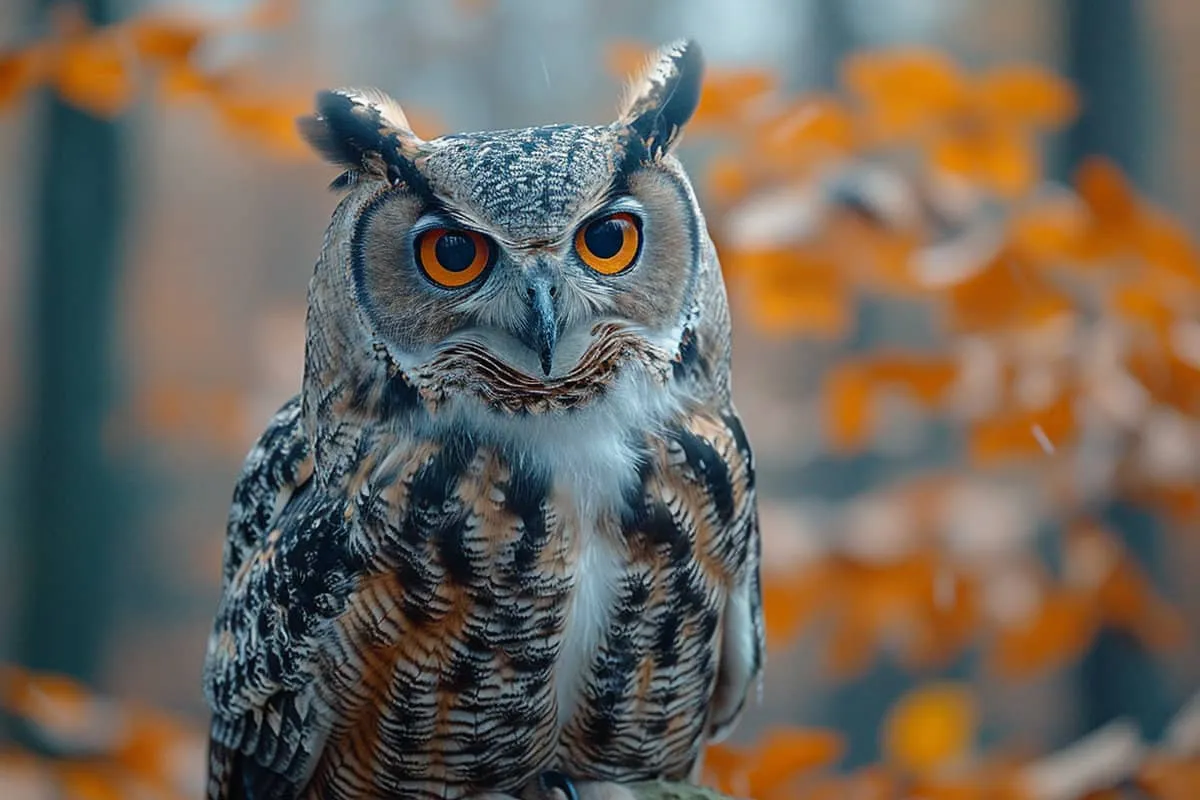
7. Owls are found on every continent except Antarctica.
Owls have made almost the entire world their home. They live in a variety of places, from dense forests to open deserts. This shows how adaptable they are, able to survive in many different climates.
But why not Antarctica? The reason is simple: it’s too cold and there’s not enough food for them there. Antarctica’s extreme cold and lack of prey make it impossible for owls to live.
Their ability to adapt has allowed them to thrive across the globe. In the United States alone, many cultures admire owls for their wisdom and mystery. Across the world, these birds can be seen as symbols of knowledge or omens of change.
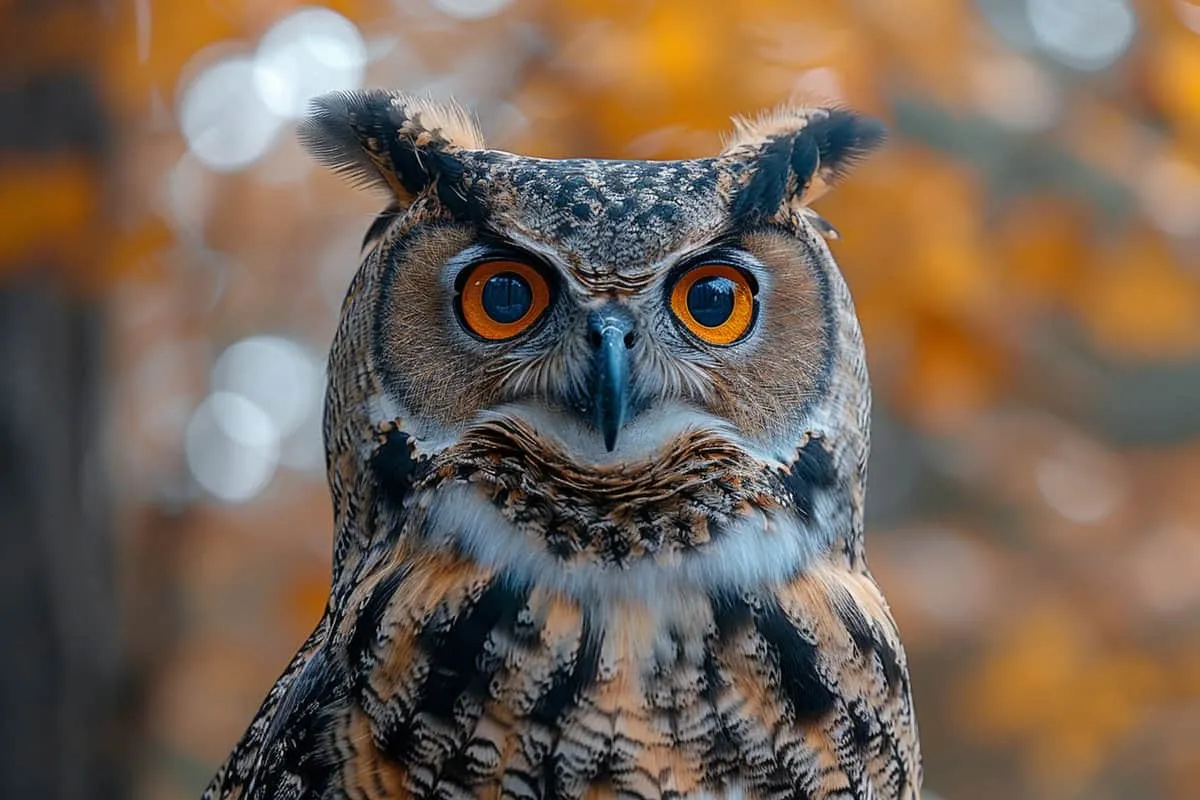
8. Some owl species have “false eyes” on the back of their heads to deter predators.
Imagine you’re a predator, and every time you try to sneak up on an owl, it seems like it’s watching you. That’s because some owls have what looks like an extra pair of eyes on the back of their heads. These aren’t real eyes but markings that create the illusion they’re always being watched.
This clever trick helps protect these owls from surprise attacks. Predators, thinking they’ve been spotted, might hesitate or choose not to attack at all. It’s nature’s own security system!
These false eyes are especially useful against other birds of prey such as hawks, which often target the backs of smaller birds during flight.
By making it look like they’re constantly on alert, owls can keep these threats at bay without having to do much at all.
It’s fascinating how something as simple as a pattern in feathers can play such a crucial role in an animal’s survival. Nature is full of surprises and ingenious solutions for life’s challenges!
9. Owls play a crucial role in controlling rodent populations.
Owls are like nature’s pest control officers. By preying on mice and rats, they help keep these populations in check.
This is crucial for farmers who often lose a significant portion of their crops to these rodents. Fewer rodents mean less crop damage and a lower risk of diseases spreading from these animals to humans.
Owls contribute to ecological balance through predation. They don’t just stop at mice and rats; owls eat a variety of small animals that could otherwise become pests if their numbers aren’t controlled.
This includes insects, small birds, and even other owls! Their diet helps maintain the natural order within various ecosystems.
Interestingly, some species like burrowing owls use abandoned prairie dog burrows as nests. These unique nesting habits further demonstrate how owls adapt to their environment for survival while controlling prey populations around them.
The presence of owl families can significantly reduce the need for chemical pesticides, which have harmful side effects on the environment.
It’s fascinating how nature has its way of balancing itself out with creatures like owls playing such an essential role.
10. The largest owl species is the Blakiston’s fish owl, with a wingspan of up to 2 meters (6 feet).
Blakiston’s fish owl is a true marvel of nature, standing out not just for its size but also for its unique hunting skills. These owls have mastered the art of catching fish from rivers and streams, making them exceptional among their feathered peers.
Their impressive wingspan, reaching up to 2 meters (6 feet), isn’t just for show. It plays a crucial role in their hunting technique.
The large wings allow them to glide silently over water surfaces, swooping down with precision to snag unsuspecting fish with their sharp talons. This silent flight is essential for a successful hunt, ensuring they don’t alert their prey before it’s too late.
Size does matter in the animal kingdom, especially for Blakiston’s fish owl. Their formidable presence gives them an upper hand not only in capturing larger prey but also in defending their territory against rivals or threats.
Imagine being a small creature and seeing this massive bird gliding towards you – it’s enough to make anyone think twice!
Frequently Asked Questions
Can owls really turn their heads all the way around?
Nope, they can’t do a full 360. Owls can twist their heads up to an impressive 270 degrees. Imagine looking over your shoulder and then some!
Why do owls have three eyelids?
Owls come equipped with three eyelids: one for blinking, another for sleeping, and a third to keep their eyes clean and healthy. It’s like having built-in goggles that also work as windshield wipers.
Are all owls night-time creatures?
Not at all! While many owl species love the nightlife, others are daytime or dusk adventurers. They’re not bound by our human schedules.
How come I never hear an owl flying by?
Thanks to their special feather design, owls fly almost silently. Their feathers break up air turbulence into smaller currents which reduces sound. It’s like they have stealth mode enabled!
Do owls have better hearing than other birds?
Absolutely! Owls’ asymmetric ears give them ninja-level sound location skills. This setup lets them pinpoint exactly where tiny noises (like mouse footsteps) are coming from.
What determines the size of an owl’s eyes?
An owl’s eye size is linked to its hunting habits and when it likes to be active—bigger eyes for those who thrive in dim light or darkness.
Where in the world can you find owls?
You’ll spot these majestic birds on every continent except Antarctica. So pretty much everywhere else, an owl could be nearby, watching quietly.

